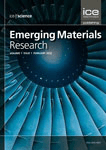
Emerging Materials Research
Scope & Guideline
Transforming ideas into impactful materials research.
Introduction
Aims and Scopes
- Multidisciplinary Applications of Materials:
The journal covers research that highlights the versatility of materials in different domains, including energy, electronics, and biomedical applications. - Advanced Material Characterization Techniques:
Research published often employs sophisticated characterization methods to analyze material properties, enhancing understanding of their performance and potential uses. - Sustainable Material Development:
A significant focus is on developing sustainable materials and processes, addressing environmental concerns and promoting the use of renewable resources. - Innovative Fabrication Methods:
The journal includes studies on cutting-edge fabrication techniques, such as additive manufacturing and nanotechnology, contributing to the advancement of material science. - Performance Optimization:
Research often explores methods to enhance the physical and mechanical properties of materials, ensuring they meet specific performance criteria for various applications.
Trending and Emerging
- Smart and Functional Materials:
Research on smart materials that respond to environmental stimuli is gaining traction, with applications in sensors, actuators, and adaptive structures. - Energy-Efficient Materials:
There is a growing emphasis on developing materials for energy applications, particularly in renewable energy technologies such as solar cells and energy storage systems. - Nanomaterials and Nanocomposites:
The exploration of nanomaterials and their composites is increasingly relevant, focusing on their enhanced properties and diverse applications in various fields. - Biomaterials and Medical Applications:
A notable trend is the rising interest in biomaterials, particularly those designed for medical applications, including drug delivery systems and tissue engineering. - Recycling and Waste Utilization:
Research on the utilization of recycled materials and waste in new material development is emerging, reflecting a commitment to sustainability and resource efficiency.
Declining or Waning
- Traditional Material Usage:
There appears to be a waning focus on conventional materials and their applications, as the journal increasingly emphasizes innovative and advanced materials. - Basic Theoretical Studies:
Research that primarily focuses on fundamental theoretical aspects of materials without practical applications has become less common, as the journal prioritizes studies with tangible outcomes. - Limited Exploration of Historical Materials:
There is a noticeable decrease in studies related to the historical analysis and characterization of traditional materials, indicating a shift towards contemporary and futuristic materials.
Similar Journals

Materials Letters-X
Pioneering Rapid Discoveries in Material ResearchMaterials Letters-X, published by ELSEVIER, is an esteemed open-access journal dedicated to the rapid communication of research in the fields of Condensed Matter Physics, Materials Science, Mechanical Engineering, and Mechanics of Materials. Launched in 2019, this journal has quickly established itself within the academic community, achieving Q3 quartile rankings in several categories according to the 2023 metrics. The journal's impactful contributions are reflected in its Scopus rankings, notably within Mechanical Engineering (Rank #308) and Mechanics of Materials (Rank #199). The open-access model promotes widespread dissemination and accessibility, ensuring that cutting-edge advancements in material science are readily available to researchers, professionals, and students worldwide. As it continues to grow, Materials Letters-X aims to inspire innovation and collaboration across disciplines, making it a pivotal resource for those engaged in material research and applications.
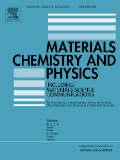
MATERIALS CHEMISTRY AND PHYSICS
Shaping the Future of Materials through Rigorous ResearchMATERIALS CHEMISTRY AND PHYSICS is a leading peer-reviewed journal published by Elsevier Science SA, focusing on the intersection of materials science and condensed matter physics. With an esteemed impact factor and a distinguished reputation in its field, this journal holds a Q1 ranking in Condensed Matter Physics and a Q2 ranking in miscellaneous Materials Science categories as of 2023. Spanning over three decades since its inception in 1983, it provides a vital platform for researchers, professionals, and students to disseminate cutting-edge findings and innovations in materials characterization, properties, and applications. The journal is indexed in Scopus, boasting impressive rankings that reflect its commitment to publishing high-quality research. Although it does not currently offer an Open Access option, it remains an essential resource for those seeking to stay at the forefront of materials chemistry and physics.
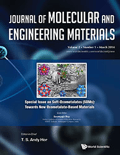
Journal of Molecular and Engineering Materials
Exploring the Nexus of Molecular Science and EngineeringThe Journal of Molecular and Engineering Materials, published by World Scientific Publishing Co Pte Ltd, is a leading peer-reviewed journal that focuses on the intricate relationship between molecular science and engineering practices. With the ISSN 2251-2373 and E-ISSN 2251-2381, this journal aims to foster the exchange of cutting-edge research and developments within the fields of materials science, molecular engineering, and related applications. Although the journal currently does not operate under an Open Access model, it remains a vital resource for researchers, professionals, and students seeking in-depth knowledge and innovative methodologies in material design and engineering. The journal's esteemed reputation is reflected in its commitment to publishing high-quality research that addresses contemporary challenges and opportunities in material science, thereby contributing to advancements in technology and industry.

JOURNAL OF CERAMIC PROCESSING RESEARCH
Unveiling Breakthroughs in Ceramic TechnologiesJOURNAL OF CERAMIC PROCESSING RESEARCH, published by the Korean Association for Crystal Growth, Inc., serves as a vital source of scholarly communication in the field of ceramics and composites. With an ISSN of 1229-9162, this well-regarded journal aims to advance knowledge through rigorous research and publication of innovative studies that push the boundaries of ceramic processing technologies. Indexed in Scopus and boasting a 2023 Q3 ranking in the ceramics category, it provides a platform for researchers to disseminate their findings and engage with emerging trends in material science. The journal reflects a commitment to contributing to the scientific community, emphasizing the importance of interdisciplinary collaboration and advancements in fabrication techniques. Although it operates under a traditional access model, the journal is a beacon for researchers, professionals, and students, inviting them to explore breakthroughs from the years 2000 through 2024 and beyond.

Elastomers and Composites
Advancing the Future of Polymer ScienceElastomers and Composites is a leading academic journal dedicated to the advancement of knowledge in the fields of polymer science and materials engineering, specifically focusing on elastomers and composite materials. Published by RUBBER SOC KOREA, this journal serves as a vital platform for researchers and professionals to disseminate innovative research findings and insights in material properties, applications, and synthesis techniques. Although it currently does not offer open access, the journal provides rigorous peer-reviewed content that enhances the global dialogue on elastomeric materials and their composites, reflecting its commitment to high-quality scholarship. With a strong emphasis on practical relevance and theoretical advancements, Elastomers and Composites aspires to reshape industry practices and academic thought, making it an invaluable resource for students, researchers, and practitioners alike. Positioned strategically within its field, this journal fosters collaboration and dialogue among scientific communities, all while supporting the growth of cutting-edge research programs worldwide.
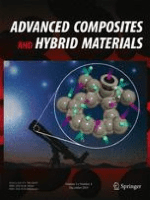
Advanced Composites and Hybrid Materials
Transforming Ideas into Advanced MaterialsAdvanced Composites and Hybrid Materials, published by SPRINGER NATURE, is a premier journal dedicated to the field of materials science, with a keen focus on innovative composite materials and their applications. With its ISSN 2522-0128 and E-ISSN 2522-0136, the journal has established itself as a cornerstone for researchers and professionals in materials chemistry, ceramics, and polymers, achieving an impressive Q1 ranking across multiple categories in 2023. In particular, it ranks #3 out of 161 in Polymers and Plastics and #4 out of 127 in Ceramics and Composites, highlighting its influential presence within the academic community. The journal aims to provide a cutting-edge platform for the dissemination of groundbreaking research and developments from 2018 to 2024, facilitating knowledge sharing and collaboration among experts. While currently adopting a traditional access model, the significance and impact of research published in this journal cannot be overstated, making it an essential resource for anyone interested in advancing the field of composite materials.
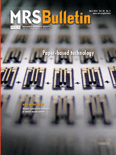
MRS BULLETIN
Unveiling Breakthroughs in Material Research.MRS BULLETIN is a distinguished academic journal published by Springer Heidelberg, focusing on groundbreaking research in the fields of condensed matter physics, materials science, and theoretical chemistry. With an impressive impact factor and categorizations in the top quartile (Q1) for 2023, it ranks among the leading journals in its field, demonstrating its critical role in advancing scientific knowledge and innovation. Operating from Heidelberg, Germany, this journal serves as an essential platform for the dissemination of high-quality research, synthesizing pivotal findings and discussions that bridge academia and industry. Researchers, professionals, and students will find invaluable insights within its pages, showcasing developments that are vital for fostering innovation in materials and physical sciences. Although it is not an open access journal, its rigorous peer-review process ensures the highest standards of scholarly communication, securing its reputation as a premier resource for current trends and breakthroughs.
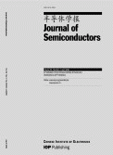
Journal of Semiconductors
Fostering collaboration in cutting-edge semiconductor research.Journal of Semiconductors, published by IOP Publishing Ltd in the United Kingdom, is a leading scholarly journal that has established itself as a premier platform for disseminating high-quality research in the fields of condensed matter physics, electrical and electronic engineering, and materials chemistry. Since its inception in 2009, the journal has featured research articles that delve into the fundamental and applied aspects of semiconductor technologies, making significant contributions to advancements in electronic, optical, and magnetic materials. The journal boasts an impressive Q1 ranking in several categories, including Condensed Matter Physics and Electronic, Optical and Magnetic Materials, reflecting its influential role in shaping contemporary research. With a dedicated audience of researchers, professionals, and students, it aims to foster collaboration and innovation in this dynamic field. Although it operates under a traditional access model, the journal offers various publication options that ensure the visibility and impact of its articles. Through its rigorous peer-review process and commitment to excellence, the Journal of Semiconductors continues to be an invaluable resource for those seeking to stay at the forefront of semiconductor research and technology.
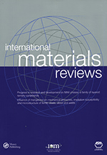
INTERNATIONAL MATERIALS REVIEWS
Your Gateway to Cutting-Edge Materials ReviewsINTERNATIONAL MATERIALS REVIEWS, published by SAGE Publications Inc, is a leading journal dedicated to the comprehensive analysis of contemporary research in the fields of materials chemistry, mechanical engineering, mechanics of materials, and the study of metals and alloys. With an impressive impact factor and a Q1 ranking across multiple categories such as Materials Chemistry and Mechanical Engineering in 2023, it ranks amongst the top journals for innovative materials research. The journal has a long-standing history since its inception in 1987 and continues to serve as a crucial resource for academics and professionals alike. Although it is not open access, it is renowned for its rigorous peer-review process and its commitment to disseminating high-quality materials science research globally. Researchers, students, and industry professionals benefit greatly from the journal's insightful reviews, both for the advancement of theoretical knowledge and practical applications within the fast-evolving materials field.

Materials Futures
Advancing the frontiers of biomaterials research.Materials Futures, an esteemed journal published by IOP Publishing Ltd, stands out as a pivotal resource in the field of Materials Science, with a particular emphasis on Biomaterials. Launched in 2022 and operating under an Open Access model, the journal aims to foster accessibility and rapid dissemination of pioneering research, thus catering to the diverse needs of researchers, professionals, and students globally. With a commendable Scopus Rank of #46 out of 137 in its category, placing it in the 66th percentile, and recognized as a Q1 journal as of 2023, Materials Futures provides a vital platform for cutting-edge studies and innovations that address contemporary challenges in materials science. As the journal evolves through its convergence period from 2022 to 2024, it continues to attract high-quality submissions aimed at advancing knowledge and applications within the biomaterials sector, reflecting its commitment to contributing vital insights and fostering collaboration across disciplines. Explore Materials Futures for your research endeavors and join a community dedicated to shaping the future of materials.